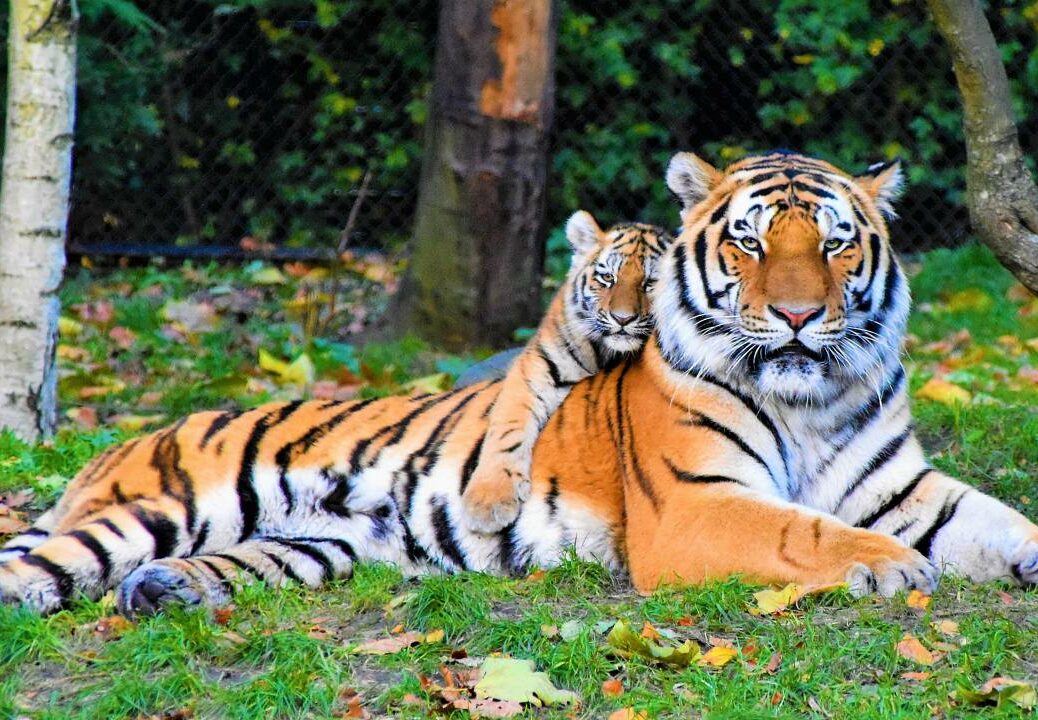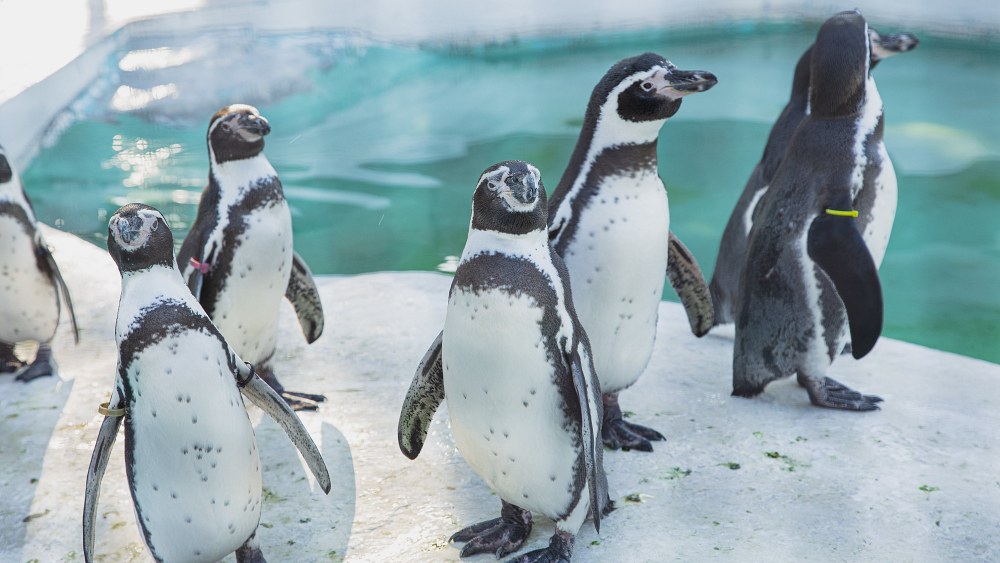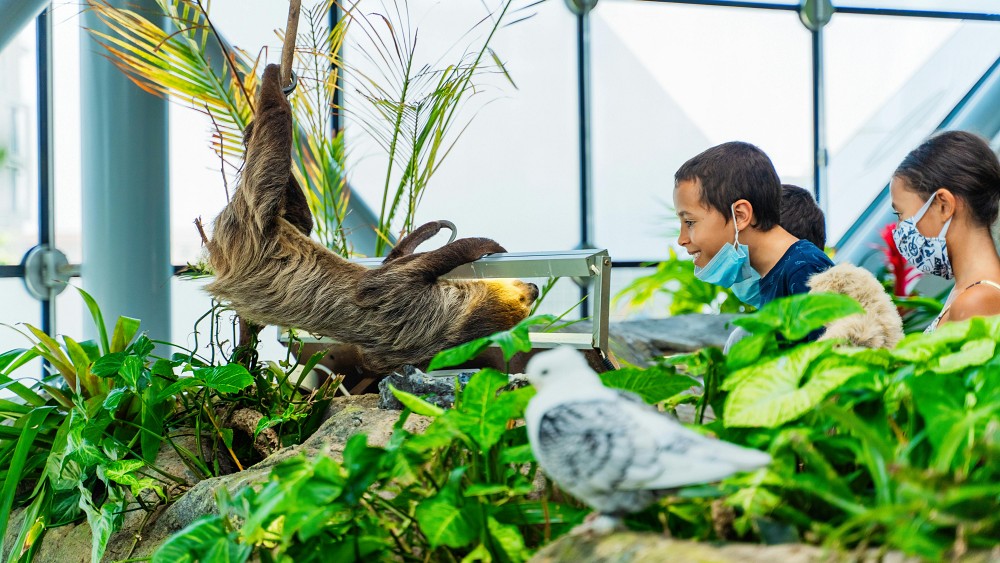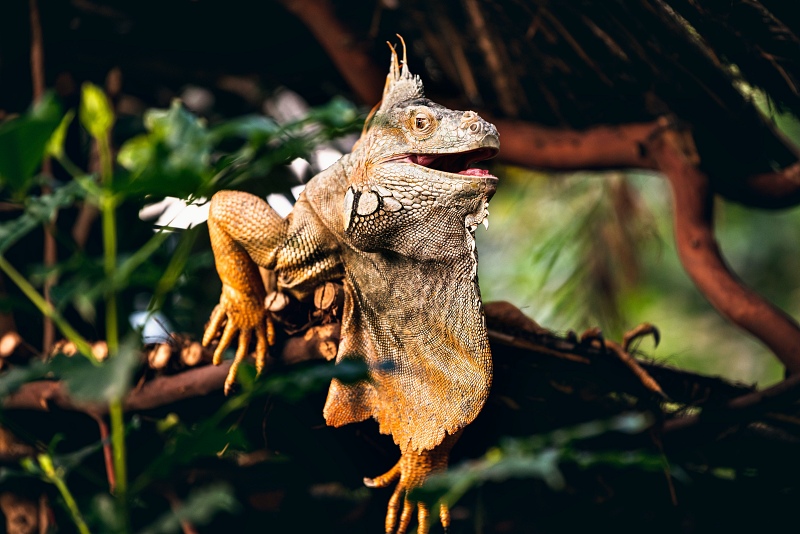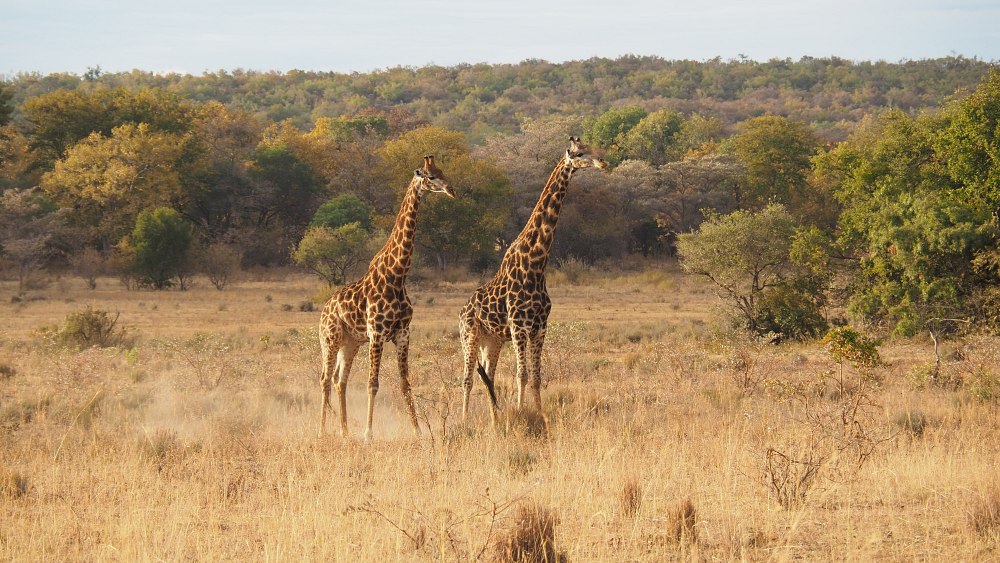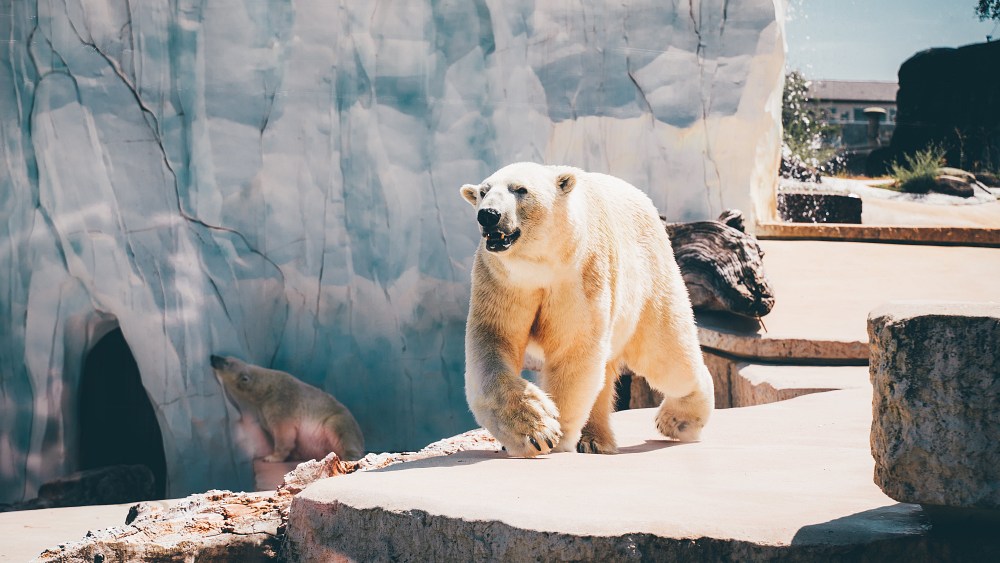The role of zoos in protecting biodiversity has become increasingly vital in a world where natural habitats are under constant threat. Biodiversity, encompassing the vast variety of life on Earth, forms the backbone of healthy ecosystems and is integral to the planet’s overall wellbeing. From microscopic organisms to towering mammals, each species contributes to ecological balance, impacting everything from food security to climate resilience. However, human-induced factors such as habitat destruction, pollution, and climate change are rapidly eroding this biodiversity, making the conservation efforts of zoos more crucial than ever.
Tracing the history of zoos reveals a remarkable evolution from mere collections of exotic wildlife meant to showcase wealth and power to becoming frontiers of conservation and education. This transformation from the archaic menageries of the past to today’s conservation-centric institutions reflects a significant shift in our understanding and approach to wildlife. Modern zoos are not just about displaying animals but are deeply involved in preserving genetic diversity, rescuing species from the brink of extinction, and educating the public about environmental stewardship.
This article explores the multifaceted role of zoos in biodiversity conservation. It delves into how these institutions have become integral in efforts to conserve species, both through direct action like breeding programs and through indirect means such as public education and global collaboration. The journey from being mere exhibitors of the animal kingdom to becoming champions of biodiversity conservation marks a pivotal shift in the narrative of zoos in the modern era.
1. Two Approaches: In-Situ vs Ex-Situ Conservation
In the realm of wildlife conservation, two approaches stand out: in-situ and ex-situ conservation. In-situ conservation is the practice of protecting species in their natural habitats, striving to maintain ecosystems and natural processes. Conversely, ex-situ conservation involves safeguarding species by removing part of the population from threatened habitats and placing them in controlled environments, such as zoos or botanical gardens. This approach is particularly vital when in-situ conservation alone is insufficient to ensure a species’ survival.
The role of zoos in breeding endangered species is a cornerstone of ex-situ conservation efforts. By creating safe, controlled environments, zoos provide a haven for species that are at risk of extinction in the wild. These breeding programs aim to increase the population size of endangered species, with the ultimate goal of reintroducing them into their natural habitats. This approach not only helps in boosting population numbers but also serves as a means to preserve genetic diversity, which is crucial for the long-term survival of a species.
A notable example of a successful breeding program is the giant panda’s conservation efforts, led by zoos and research centers in China and around the world. Once on the brink of extinction, the giant panda’s population has seen a significant increase thanks to meticulous breeding and research efforts. These programs, often involving international collaboration, have been instrumental in understanding panda biology and improving their breeding success.
Another success story comes from the world of amphibians, a group particularly vulnerable to environmental changes and disease. Zoos have played a critical role in breeding programs for various amphibian species, such as the Panamanian golden frog, which is now extinct in the wild. These programs involve not just breeding but also disease research and habitat restoration efforts.
However, breeding programs in zoos face numerous challenges and limitations. One major challenge is ensuring genetic diversity within the captive populations, which is essential to prevent inbreeding and maintain healthy individuals. Another limitation is the difficulty in replicating the natural habitat and conditions that animals would experience in the wild. This can lead to challenges in reintroducing these animals back into their natural habitats, as they may not possess the necessary skills or adaptations to survive independently. Additionally, there are ethical considerations regarding the long-term impact of captivity on animal behavior and welfare. Despite these challenges, the role of zoos in ex-situ conservation remains a vital component in the broader strategy to protect and preserve global biodiversity.
2. Education and Public Engagement
Educational Programs in Zoos and Their Impact on Public Awareness
Zoos have become pivotal in educating the public about the importance of biodiversity and conservation. Through structured educational programs, including guided tours, workshops, and informational displays, zoos provide valuable insights into the lives of the animals and the challenges they face in the wild. These programs play a crucial role in raising awareness about species conservation and environmental issues, often inspiring visitors to become active participants in conservation efforts. By connecting people with wildlife, zoos help to foster a deeper understanding and appreciation of the natural world, which is essential in cultivating a culture of conservation.
Interactive Experiences and Their Role in Fostering Conservation Mindset
Interactive experiences in zoos, such as animal encounters, feeding sessions, and keeper talks, offer visitors a more hands-on approach to learning about wildlife. These engaging activities not only enhance the visitor experience but also leave a lasting impression, significantly contributing to a conservation mindset. By allowing visitors to experience wildlife up close, zoos create emotional connections between people and animals, which can be powerful motivators for conservation behavior. These experiences are carefully designed to be both educational and ethical, ensuring the welfare of the animals while providing an immersive learning opportunity for visitors.
Contributions of Zoos to Scientific Research and Education
Zoos are not just about showcasing animals; they are also centers of scientific research and education. Many zoos collaborate with universities and research institutions, conducting studies in areas like animal behavior, conservation biology, and veterinary medicine. These studies often lead to important discoveries that can help in the conservation of species in the wild. Additionally, zoos provide opportunities for students and researchers to gain practical experience in zoology and conservation, playing a significant role in training the next generation of conservationists and researchers.
Ethical Considerations in Displaying Animals for Educational Purposes
The ethical display of animals in zoos is a subject of ongoing debate and scrutiny. Modern zoos strive to balance educational objectives with the highest standards of animal welfare. This involves creating environments that closely mimic natural habitats, ensuring that the physical and psychological needs of the animals are met. Zoos face the challenge of educating the public about wildlife and conservation while respecting the intrinsic value and welfare of the animals in their care. This balance is critical to the mission of zoos as institutions that both educate the public and advocate for the well-being of the species they house.
3. Zoos as Genetic Reservoirs
The Importance of Genetic Diversity in Conservation
Genetic diversity is a critical component of biodiversity conservation, ensuring the resilience and adaptability of species to changing environments and threats. In the wild, this diversity allows populations to withstand diseases, environmental changes, and other challenges, thereby supporting the overall health and survival of the species. Zoos play a crucial role in maintaining genetic diversity, particularly for those species whose numbers are dwindling in their natural habitats. By managing breeding programs and maintaining diverse gene pools, zoos help in preserving the genetic richness necessary for the long-term survival of species.
Zoos as Gene Banks for Endangered Species
Zoos function as living gene banks, preserving the genetic material of endangered species. This role is especially critical for species facing imminent threats in the wild, where population numbers have declined to critical levels. By housing genetically diverse individuals, zoos provide a safeguard against the loss of genetic variability. The controlled environment of zoos allows for careful breeding management, ensuring that genetic diversity is maintained and, where possible, enhanced. This not only aids in the survival of these species within zoos but also provides options for future reintroduction and restoration efforts in their natural habitats.
Techniques Used in Genetic Conservation (e.g., Cryopreservation)
Advancements in technology have broadened the scope of genetic conservation in zoos. Techniques such as cryopreservation—freezing and storing genetic material like sperm, eggs, and embryos—have become increasingly important. This method allows zoos to store genetic material for long periods, providing a valuable resource for future breeding programs. Cryopreservation can be particularly vital for species where the number of breeding individuals is limited, or where breeding success is challenging. This technique provides a means to reintroduce genetic material into populations, enhancing genetic diversity and aiding in the recovery of endangered species.
Ethical and Practical Challenges in Genetic Management
While genetic management plays a vital role in conservation, it comes with its set of ethical and practical challenges. Ethical considerations include the welfare of the animals involved in breeding programs and the potential consequences of long-term captivity on genetic traits. Practically, managing genetic diversity requires extensive knowledge, careful planning, and collaboration among conservationists and scientists. It involves complex decision-making regarding which individuals to breed, the timing of breeding, and the potential reintroduction of animals into the wild. These challenges highlight the need for ongoing research, ethical deliberation, and collaboration in the field of zoo-based genetic conservation.
4. Global Conservation Efforts and Partnerships
]Collaboration Between Zoos and International Conservation Organizations
Zoos play a pivotal role in global conservation through their collaborations with international conservation organizations. These partnerships extend the impact of zoos far beyond their physical boundaries, allowing them to contribute to conservation efforts on a global scale. By working together with organizations like the World Wildlife Fund (WWF) and the International Union for Conservation of Nature (IUCN), zoos pool resources, share expertise, and coordinate on large-scale conservation initiatives. Such collaborations enable zoos to participate in comprehensive conservation strategies that address both the needs of individual species and their natural habitats.
Zoos’ Role in Reintroduction Programs
Reintroduction programs are a vital aspect of zoos’ contribution to wildlife conservation, where animals bred in captivity are released into their natural habitats. These programs are crucial for species that have become extinct or near-extinct in the wild. Zoos, through their breeding and conservation programs, prepare animals for reintroduction, a process that often involves acclimatizing them to the wild and teaching them survival skills. Successful reintroduction not only helps in restoring population numbers but also aids in rebalancing ecosystems.
Contribution to Habitat Preservation and Restoration Projects
Beyond breeding and reintroduction, zoos contribute significantly to habitat preservation and restoration projects. Recognizing that the survival of species is intrinsically linked to their habitats, many zoos fund and participate in efforts to protect and restore natural environments. This includes reforestation projects, wetlands restoration, and protection of critical habitats from human encroachment and environmental threats. Through these efforts, zoos help in ensuring that reintroduced species, as well as those in the wild, have a sustainable environment to thrive in.
Case Studies of Global Conservation Efforts Led or Supported by Zoos
One notable case study is the role of the American and European zoos in the conservation of the Arabian Oryx, which was once extinct in the wild. Through coordinated breeding programs, individuals were successfully reintroduced into protected areas in the Arabian Peninsula. Another example is the contribution of the Association of Zoos and Aquariums (AZA) in the Madagascar Fauna and Flora Group, which focuses on the conservation of Madagascar’s unique biodiversity. These initiatives demonstrate how zoos contribute not only through direct animal management but also by engaging in broader conservation efforts that have a significant impact on global biodiversity.
5. Ethical and Welfare Considerations
The Debate Over Animal Welfare in Zoos
The welfare of animals in zoos is a topic of considerable debate, reflecting a growing public concern about the ethical implications of keeping wild animals in captivity. Critics often argue that confining animals to limited spaces, even with enrichment and care, can lead to physical and psychological issues, such as stereotypic behaviors or increased stress. Proponents, however, emphasize the role of modern zoos in conservation, research, and education, and argue that high standards of care and welfare can make zoos a positive environment for many species. This debate underscores the need for continuous improvement in animal care and welfare standards in zoos.
Standards and Regulations Governing Zoos
Zoos are subject to a range of standards and regulations designed to ensure the welfare and ethical treatment of animals. In many countries, zoos must adhere to strict licensing requirements, undergo regular inspections, and meet specific animal welfare standards. Organizations like the Association of Zoos and Aquariums (AZA) and the European Association of Zoos and Aquaria (EAZA) set accreditation standards that include animal health and well-being, enclosure size and design, and enrichment programs. Compliance with these standards is crucial for zoos not only to maintain their operational licenses but also to uphold their reputation and public trust.
Modern Zoo Design for Animal Welfare
Contemporary zoo design is increasingly focused on creating environments that cater to the physical and psychological needs of animals. This involves moving away from traditional cages and toward more naturalistic habitats that simulate the animals’ native environments. Features like vegetation, water sources, varied terrain, and enrichment activities are integral to these designs, offering animals opportunities for natural behaviors and stimulation. The goal is to provide a habitat that supports animal health and well-being, allowing them to exhibit a range of natural behaviors.
Balancing Animal Welfare with Conservation Goals
Balancing the welfare of individual animals with broader conservation goals is a complex challenge faced by modern zoos. While the primary objective of zoos is conservation, including breeding endangered species and educating the public, ensuring the well-being of animals in their care is equally important. This balance requires a holistic approach that considers the physical, psychological, and behavioral needs of animals while also addressing conservation priorities. It involves making informed decisions about breeding programs, habitat design, and public interaction, ensuring that the welfare of the animals is not compromised in the pursuit of conservation objectives. This balance is critical for zoos to maintain their role as ethical and effective institutions in conservation.
6. Top U.S. Zoos Leading in Biodiversity Conservation
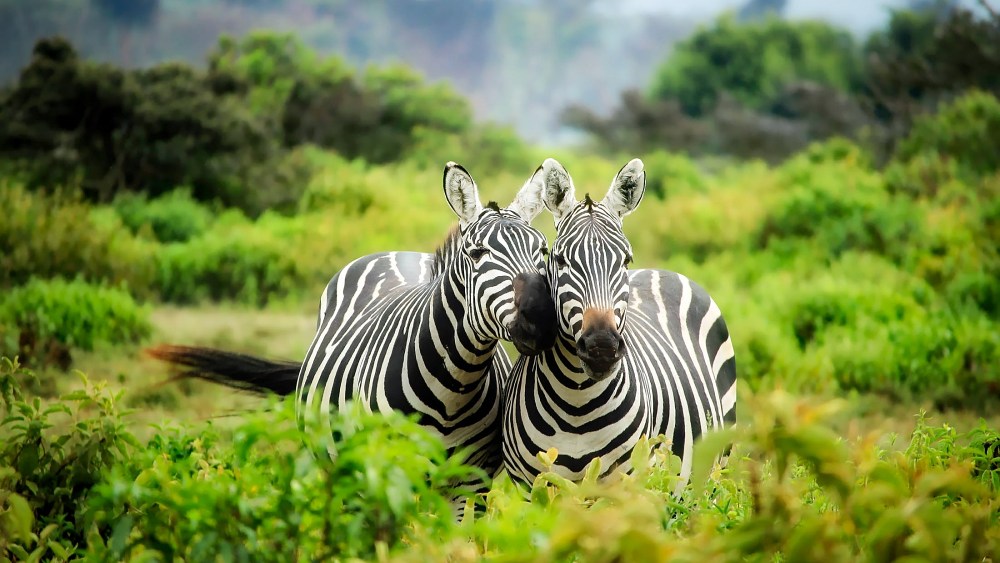
San Diego Zoo, California
San Diego Zoo is renowned for its pioneering conservation programs and an extensive array of species bred in captivity. The zoo’s efforts in conserving the California condor from the brink of extinction and its groundbreaking work with the giant panda are particularly noteworthy. San Diego Zoo’s global partnerships, like the Giant Panda Conservation Project, have garnered international acclaim, underscoring its commitment to species conservation on a global scale.
Bronx Zoo – Bronx, New York
The Bronx Zoo plays a significant role in global wildlife conservation, spearheading numerous breeding programs for endangered species. It has been instrumental in reintroducing species like the American bison to their native habitats. The zoo’s Wildlife Conservation Society (WCS) leads various research initiatives, significantly contributing to the understanding and preservation of wildlife biodiversity.
Smithsonian’s National Zoo – Washington D.C.
At the Smithsonian’s National Zoo, a strong emphasis is placed on scientific research and conservation biology. The zoo is actively involved in breeding programs for species like the Asian elephant and the Sumatran tiger. Its involvement in global conservation networks and collaborative projects, such as the Species Survival Plan, highlights its commitment to preserving global biodiversity through science and research.
Lincoln Park Zoo – Chicago, Illiniois
Chicago’s Lincoln Park Zoo excels in integrating conservation with scientific research. The zoo’s Urban Wildlife Institute focuses on understanding and conserving wildlife in urban environments. Its recovery efforts for species like the Eastern massasauga rattlesnake and the black-footed ferret exemplify its commitment to both local and global conservation initiatives.
Henry Doorly Zoo and Aquarium – Omaha, Nebraska
Omaha’s Henry Doorly Zoo and Aquarium is a leader in conservation genetics, playing a vital role in breeding programs for endangered species such as the African elephant and the Malayan tiger. The zoo’s innovative use of technology in habitat design and animal care sets it apart, enhancing its contributions to local and international conservation efforts. Its state-of-the-art Desert Dome and Lied Jungle are examples of how technology and habitat design can coalesce to support biodiversity.
These top U.S. zoos each bring unique strengths to the table in the realm of biodiversity conservation. From pioneering breeding programs to innovative research and public education, their contributions are significant and multifaceted. Reflecting on their roles, it’s evident that these institutions are not just places to view wildlife but are active participants in the global effort to conserve our planet’s rich biodiversity.
7. Challenges and Future Directions
Financial and Logistical Hurdles
Zoos contend with the rising tide of financial and logistical demands that are intrinsic to modern conservation work. The financial aspect is especially daunting, as providing high-quality animal care and maintaining engaging habitats are becoming increasingly expensive. Logistical issues add another layer of complexity, encompassing the coordination of breeding programs and the management of diverse species, which requires both strategic foresight and substantial investment.
Climate Change and Habitat Loss
The twin threats of climate change and habitat loss cast a long shadow over zoo conservation efforts. As ecosystems around the world are altered or eradicated by these forces, zoos are vital in offering alternative habitats for threatened species. However, these environmental changes challenge zoos to adapt their conservation strategies, especially when considering the reintroduction of species into the wild, a task made more difficult by the shifting ecological balance.
Zoos in the Global Biodiversity Crisis
In facing the global biodiversity crisis, zoos are poised to play a more critical role than ever before. They stand as bastions for the preservation of species that are facing existential threats in their natural environments. Zoos are becoming more than just places of refuge; they are active educational centers that highlight the intricate links between species and their ecosystems, fostering a broader understanding of the urgent need for conservation.
Embracing Innovation in Conservation
Forward-thinking and innovation are at the forefront of zoo conservation strategies. Technological advancements, such as reproductive technologies and genetic research, are revolutionizing the way zoos participate in conservation. Alongside this, the integration of data analytics, artificial intelligence, and immersive visitor experiences are enhancing animal welfare and public engagement. These innovations are critical for ensuring that zoos remain effective and relevant in their mission to conserve biodiversity.
Conclusion
Zoos have evolved to become critical players in the protection of biodiversity, serving as sanctuaries for endangered species, champions of genetic diversity, and architects of global conservation partnerships. Through their dedicated breeding programs, they have given species on the brink of extinction a chance at renewal, while their public education efforts have raised awareness and fostered a conservation ethos among communities worldwide.
Yet, the journey of zoos is intertwined with ethical, practical, and scientific considerations. Ethically, zoos are tasked with ensuring the well-being of their inhabitants, providing environments that stimulate and resemble their natural habitats. Practically, they must navigate the complexities of funding and logistics, while scientifically, they are on the frontier of research and innovation in conservation techniques. The balance of these aspects is crucial for the continued success and relevance of zoos in conservation.
The contribution of zoos to conserving our planet’s biodiversity is a collective endeavor that requires public support and involvement. Visitors, donors, and community advocates play a vital role in this mission. By supporting zoos, individuals contribute to a larger effort to preserve the delicate tapestry of life on Earth. Thus, a call to action is made for the public to engage, support, and participate in the conservation efforts championed by zoos. Together, we can ensure that the diverse and vibrant spectrum of life continues to thrive for generations to come.
- 30 Environmental Activities to Feed Your Mind, Body & Soul - December 19, 2023
- Exploring the Wonders of Dark Sky Parks: A Stargazer’s Paradise - December 19, 2023
- Biodiversity Loss – A Crisis in the Making - December 12, 2023
